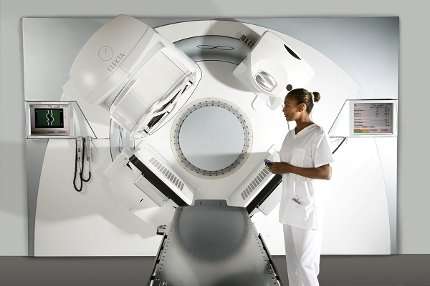- Home
- Editorial
- News
- Practice Guidelines
- Anesthesiology Guidelines
- Cancer Guidelines
- Cardiac Sciences Guidelines
- Critical Care Guidelines
- Dentistry Guidelines
- Dermatology Guidelines
- Diabetes and Endo Guidelines
- Diagnostics Guidelines
- ENT Guidelines
- Featured Practice Guidelines
- Gastroenterology Guidelines
- Geriatrics Guidelines
- Medicine Guidelines
- Nephrology Guidelines
- Neurosciences Guidelines
- Obs and Gynae Guidelines
- Ophthalmology Guidelines
- Orthopaedics Guidelines
- Paediatrics Guidelines
- Psychiatry Guidelines
- Pulmonology Guidelines
- Radiology Guidelines
- Surgery Guidelines
- Urology Guidelines
Study outlines risk avoidance strategies with clinical 7-T MRI

The relatively high magnetic field of seven tesla (7T) Magnetic Resonance Imaging (MRI) and its increased use in a clinical environment made a group of experts led by Michael N. Hoff of from the Department of Radiology, University of Washington to call for a risk avoidance strategy that may help the damaging effects of MRI.
Their review study published in the Journal, Radiology, outlined the safety risks of and associated risk-avoidance strategies for clinical 7-T MRI.
The U.S. Food and Drug Administration (FDA) categorized MRI up to 8 T as a nonsignificant risk device for nonneonatal patients in 2003, and in 2009 the International Commission on Non-Ionizing Radiation Protection found that no serious health effects had resulted from acute exposures at this field strength.
In October 2017 The FDA gave clearance to the first 7 tesla MRI scanner and soon after the clearance, several institutions expanded their use of the modality to evaluate patients with neurological disorders, such as multiple sclerosis and epilepsy, and better diagnose musculoskeletal injuries. At the same time, clinicians became acutely aware of patients with implants and other accessories that might prevent the completion of a 7-tesla scan.
Although 7-T MRI has received approval for use in clinical patient care, there are distinct safety issues associated with this relatively high magnetic field. At 7 T, translational and rotational forces become more pronounced. Radiofrequency (RF) heating from induced voltages is of particular concern because, at 7 T, regions of tissue can absorb greater RF energy than permitted by limits already established at lower field strengths. Implanted devices such as cochlear implants, neuromodulation systems, and cardiovascular implantable devices may undergo interference, altered settings, malfunctions, or permanent damage at 7 T. This demands a well-devised guideline that provides safety considerations relevant for human imaging.
Risk-avoidance strategies proposed by the team
- Educating radiology personnel on identifying, understanding, and avoiding unwanted forces and heating in clinical 7-T MRI can reduce safety risks and prevent injuries.
- Understanding bioeffects that may manifest during clinical 7-T MRI is essential for their management.
- For 7-T MRI, stronger electromagnetic fields cause greater forces on metallic devices, increased the potential for functional deficiency
of active implants, and unpredictable radiofrequency heating due to the current lack of single-channel body radiofrequency transmit
coils and the shorter resonant wavelength relative to lower magnetic field strengths. - In a study of more than 3000 patients imaged with 7-T MRI, nystagmus, nausea, motion disturbances, dizziness, and other bioeffects were shown to be of some concern, with 38% of patients reported vertigo, 5.4% reported electrogustatory effects (metallic taste), and 1.2% reported magnetophosphenes (perceived flashing lights).
For reference, follow the link
https://doi.org/10.1148/radiol.2019182742

Disclaimer: This site is primarily intended for healthcare professionals. Any content/information on this website does not replace the advice of medical and/or health professionals and should not be construed as medical/diagnostic advice/endorsement or prescription. Use of this site is subject to our terms of use, privacy policy, advertisement policy. © 2020 Minerva Medical Treatment Pvt Ltd